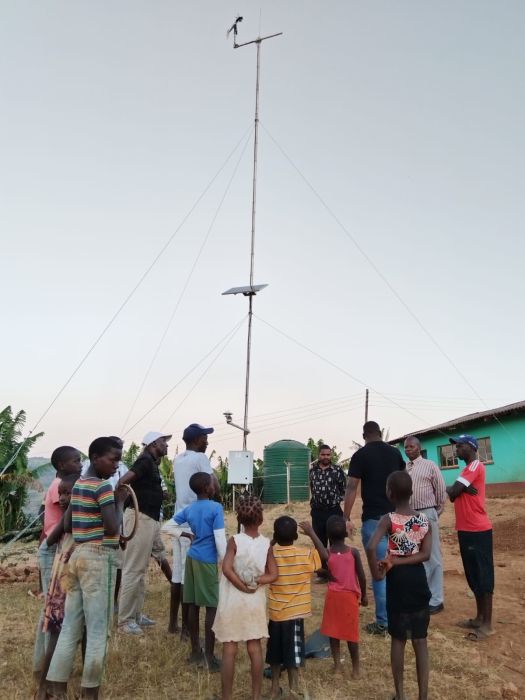




概要
国連開発計画(UNDP)の「気候適応・水・エネルギープログラム(CAWEP)」の一環として、Campbell Scientificはジンバブエの気候適応対策を支援するため、18基の自動気象観測システム(AWS)を設置しました。これらのAWSは世界気象機関(WMO)の要件に準拠し、**ビンガ(Binga)、チピンゲ(Chipinge)、チビ(Chivi)、インシザ(Insiza)**の4つの地区に戦略的に配置されました。本プロジェクトは、早期警報システム(EWS)の強化、水資源の確保、エネルギーの持続可能性の向上を目的としており、気候変動の影響から地域社会を守ることを目指しています。
課題
ジンバブエは気候変動の影響を受けやすい国であり、特に水とエネルギー分野において深刻な課題に直面しています。同国の農業は雨水に大きく依存しており、気候変動による天候の変化は、食料不足、教育の中断、医療サービスの低下、経済の不安定化を引き起こしています。さらに、財政難やインフラの老朽化が、気候変動に対する効果的な対応を妨げています。ジンバブエ政府は、気候目標の達成に向けたグリーンインフラプロジェクトのための大規模な資金調達を必要としていました。
解決策
Campbell Scientificは、UNDP CAWEPイニシアチブと連携し、戦略的に選定された地域にAWSを導入しました。これらのAWSは、データロガー、通信システム、データ取得ハードウェアなどの最先端技術を搭載し、気象パターン、水資源、エネルギーの動態を総合的にモニタリングします。また、Campbell Scientificは、ジンバブエ気象局の技術者に対して包括的なトレーニングを実施し、AWSの各コンポーネント、システム設定、データ取得、CRBasicプログラミングに関する知識を提供しました。
メリット
- 早期警報システム(EWS)の強化: AWSによる気象監視の向上により、干ばつや洪水などの極端気象に対する警報発信が可能になりました。これにより、地域社会が事前に対策を講じ、被害を最小限に抑えることができます。
- 水資源の管理とアクセス向上: AWSは降水量や水資源の状況を継続的にモニタリングし、農業生産や家庭用水の確保に役立ちます。これにより、水不足の影響を受ける地域への的確な資源配分が可能になります。
- クリーンで手頃なエネルギーの促進: AWSの導入により、太陽放射量や風力データの収集が可能となり、持続可能なエネルギーソリューションの開発を支援します。特に、従来のエネルギー供給が限られている農村地域にとって、大きなメリットとなります。
- データ駆動型の意思決定: AWSが提供する包括的なデータにより、政策立案者、研究者、地域社会が科学的根拠に基づいた判断を行うことが可能になります。これにより、資源配分、災害対策、持続可能な開発がより効果的に実施されます。
- 能力開発と持続可能性の確保: Campbell Scientificのトレーニングを受けたジンバブエ気象局の技術者がAWSを適切に運用・維持管理することで、プロジェクトの長期的な持続可能性が確保されます。
- 気候耐性への貢献: AWSの設置は、ジンバブエのパリ協定および国別決定貢献(NDC)の目標に沿ったものであり、気候適応および緩和の具体的な進展を示しています。
Campbell ScientificがUNDP CAWEPイニシアチブと協力し、気候変動の影響を受けやすいジンバブエの地域にAWSを導入した本プロジェクトは、最新技術を活用して気候レジリエンスを向上させる成功モデルの一例です。本取り組みは、水資源・エネルギー・早期警報システムの課題を解決し、持続可能な開発を促進し、地域社会のエンパワーメントを実現するものです。